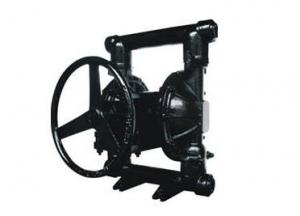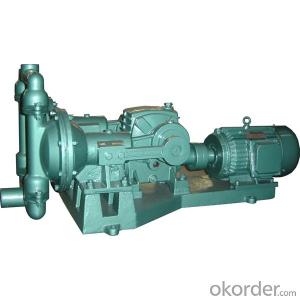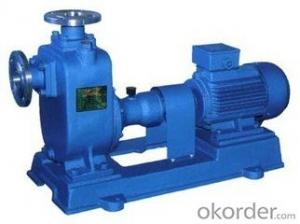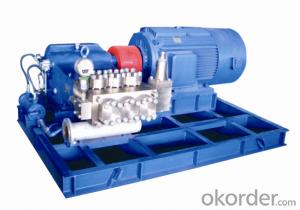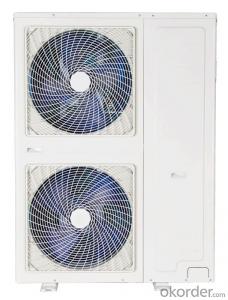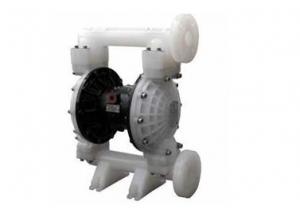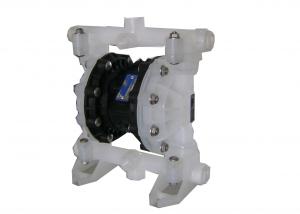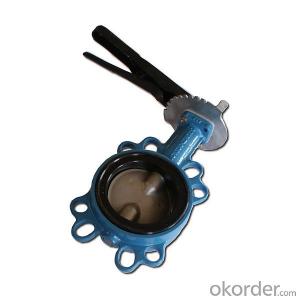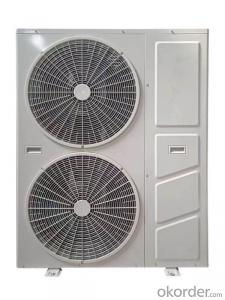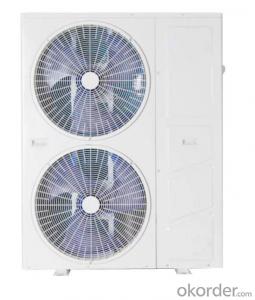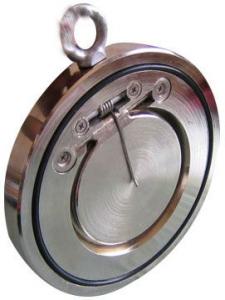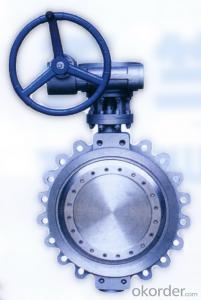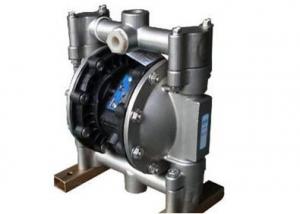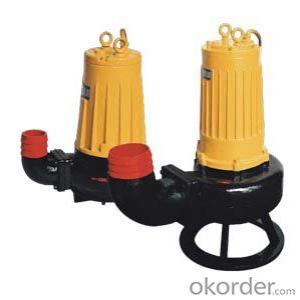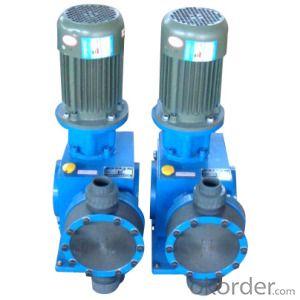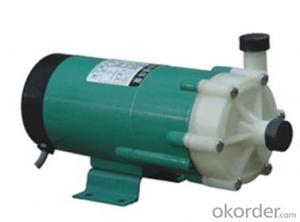Multistage Centrifugal Pump TSWA
- Loading Port:
- China Main Port
- Payment Terms:
- TT OR LC
- Min Order Qty:
- -
- Supply Capability:
- -
OKorder Service Pledge
Quality Product, Order Online Tracking, Timely Delivery
OKorder Financial Service
Credit Rating, Credit Services, Credit Purchasing
You Might Also Like
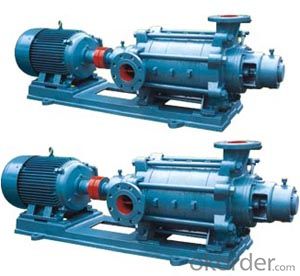
Product Description
The series of pumps are new model produets developed by our company. Which have rational configuration and long useful life work with high efficiency and Less noise and do well in resisting cavitation.
The TSWA seriesconsist of 5 varieties. That is 40 specs.
The TSWA seriesconsist of 5 varieties. That is 40 specs.
The followings are their working range:
Q(flux)=15-19m3/h,
H(head)=17-247m,
n(rev)=1450r/min
T(temperature of llquids)<=80'C.
The liquids should be clean water or similar to water in chemical and physical properties.
The pumps are especially adapted to water supply of air-eondltione r eauipped in hotels and restaurants.
The liquids should be clean water or similar to water in chemical and physical properties.
The pumps are especially adapted to water supply of air-eondltione r eauipped in hotels and restaurants.
- Q:Can an air pump be used for inflatable sports arenas?
- Indeed, inflatable sports arenas can make use of an air pump. To maintain their inflated state, these arenas heavily depend on a constant flow of air. An air pump can effectively supply the required air pressure, thereby upholding the structure's form and stability. It is crucial to choose an air pump that possesses ample power to generate the necessary air pressure for arena inflation. Additionally, the pump should be equipped with a suitable nozzle or attachment to fit the arena's inflation valves. By ensuring compatibility between the air pump and the specific requirements of the inflatable sports arena, proper inflation and safe usage can be guaranteed.
- Q:What are the main uses of the air pump in the decoration?
- To see what the pump used to paint, nail gun, and so are the.
- Q:Can an air pump be used for inflating inflatable bounce houses with ball pits?
- Yes, an air pump can definitely be used for inflating inflatable bounce houses with ball pits. In fact, using an air pump is the most efficient and recommended method for inflating these types of inflatables. Air pumps are designed to quickly and easily inflate large objects, and they typically come with various nozzle attachments that can be used to fit different types of valves found on inflatable bounce houses. Additionally, air pumps often have adjustable pressure settings, allowing you to control the level of inflation to ensure the bounce house is properly filled and safe for use. Overall, using an air pump is a convenient and effective way to inflate inflatable bounce houses with ball pits.
- Q:How does an air pump handle different air densities?
- An air pump is designed to handle different air densities by utilizing a mechanism called compression. This mechanism involves compressing air molecules together, which increases the pressure and creates a higher density of air. When the air pump is turned on, it creates a vacuum or low-pressure zone inside the pump. This low-pressure zone allows air from the surrounding environment to be drawn into the pump. As the air enters the pump, it passes through a chamber where a piston or diaphragm compresses the air. The compression process reduces the volume of the air while simultaneously increasing its pressure. This compression is what enables the air pump to handle different air densities. Regardless of the initial density of the air being drawn into the pump, the compression mechanism ensures that the air is compressed to a higher density before being expelled from the pump. In simpler terms, the air pump essentially squeezes the air molecules closer together, which increases their density. This compression mechanism allows the air pump to handle air of varying densities, whether it is thin at high altitudes or denser at lower altitudes. It is worth noting that air pumps may have different designs and mechanisms depending on their purpose and application. However, the basic principle of compression remains the same, enabling the pump to handle different air densities effectively.
- Q:How do I choose the right air pump for my needs?
- To ensure you make the optimal choice, several factors should be taken into account when selecting the appropriate air pump for your requirements. 1. Purpose: Determine the intended application of the air pump. Will it be used for inflating tires, mattresses, or sports equipment? Alternatively, is it needed for aquariums or hydroponic systems? Different air pumps are specifically designed for certain purposes, thus it is crucial to ascertain the intended usage. 2. Power source: Consider whether you would prefer an electric air pump that necessitates a power outlet or a portable one that operates on batteries. Generally, electric pumps are more potent and ideal for high-capacity inflatables, while battery-operated pumps are excellent for on-the-go use or situations where electricity is not readily accessible. 3. Airflow and pressure: Seek an air pump that delivers adequate airflow and pressure tailored to your specific needs. Airflow is typically measured in liters per minute (LPM) or cubic feet per minute (CFM), while pressure is measured in pounds per square inch (PSI). Ensure that the chosen pump can generate the required airflow and pressure for efficient and prompt inflation. 4. Noise level: Take into account the noise level of the air pump, especially if you intend to use it indoors or in a tranquil environment. Certain models are designed to operate with reduced noise, thus consulting product reviews or specifications can assist in finding one that aligns with your preferences. 5. Size and portability: If a portable air pump is required, consider its dimensions and weight. Smaller, lightweight pumps are easier to transport, whereas larger ones may offer greater power but may be less convenient for travel purposes. 6. Durability and quality: Seek out a pump constructed from robust materials that can endure regular use. Evaluating customer reviews and examining the manufacturer's reputation can provide insight into the pump's quality and durability. 7. Additional features: Some air pumps are equipped with supplementary features such as automatic shut-off mechanisms when a specific pressure is attained, built-in pressure gauges, or multiple nozzle attachments. These features can enhance convenience and improve the versatility of the pump. 8. Budget: Lastly, take into consideration your budget and endeavor to find the most suitable air pump that falls within your price range. Comparing prices and features of various models can help identify the one that offers the best value for money. By considering these factors, an informed decision can be made, enabling the selection of the appropriate air pump that effectively and efficiently meets your specific needs.
- Q:What are the different power consumption levels of air pumps?
- The power consumption levels of air pumps can vary depending on the type and size of the pump. Generally, smaller air pumps designed for aquariums or small inflatable objects consume around 1-10 watts of power. Medium-sized air pumps used for larger aquariums or inflatable beds typically range from 10-50 watts. Larger industrial-grade air pumps used for commercial purposes can consume anywhere from 50 watts to several hundred watts of power.
- Q:What is the maximum depth an air pump can effectively inflate objects underwater?
- Various factors, including the design and power of the air pump, the density and volume of the object being inflated, and the water pressure at that depth, determine the maximum depth at which an air pump can effectively inflate objects underwater. Generally, most air pumps designed for underwater use can effectively inflate objects up to approximately 30 meters (98 feet) or more. However, it is crucial to note that as the depth increases, so does the water pressure, which can pose challenges for air pumps in delivering sufficient air volume and pressure for effective inflation. At greater depths, the heightened water pressure can compress the air inside the pump, making it more challenging for the pump to generate adequate pressure for inflation. Additionally, the increased water pressure can lead to air leaks or damage to the pump's components, reducing its efficiency and effectiveness. To overcome these challenges, specialized underwater air pumps are equipped with stronger motors and reinforced components to withstand higher water pressures. These pumps are typically utilized for specific purposes such as inflating diving equipment, underwater structures, or underwater vehicles. Therefore, while there is no fixed maximum depth, it is crucial to consider the air pump's specifications and limitations, as well as the specific requirements of the object being inflated, to ensure effective inflation underwater.
- Q:How long does it take for an air pump to inflate an average-sized tire?
- The time it takes for an air pump to inflate an average-sized tire can vary depending on several factors such as the power and efficiency of the pump, the starting pressure of the tire, and the desired inflation level. Generally, it can take anywhere from a few minutes to around 5-10 minutes to fully inflate an average-sized tire.
- Q:What is the maximum size of air pump available?
- The maximum size of an air pump available can vary depending on the specific type and purpose of the pump. In general, air pumps can range in size from small portable units that can fit in the palm of your hand, to larger industrial-grade pumps that can be several feet in length and weigh hundreds of pounds. The maximum size of an air pump will also depend on the capacity or volume of air it is designed to move. For example, a small aquarium air pump may have a maximum capacity of a few liters per minute, while a large industrial air compressor can have a maximum capacity of several thousand cubic feet per minute. Ultimately, the maximum size of an air pump will be determined by the specific application and requirements of the user.
- Q:How to choose the right air pump for a specific pneumatic valve?
- Choosing the right air pump for a specific pneumatic valve requires careful consideration of several factors. Here are some steps to help you make an informed decision: 1. Understand the requirements: Start by understanding the specific requirements of your pneumatic valve. Consider factors such as the valve size, operating pressure range, flow rate, and any additional features or specifications mentioned by the manufacturer. 2. Determine the air source: Identify the available air source for the pneumatic valve. This could be a compressed air system, a standalone air compressor, or any other source capable of providing the required air pressure and flow. 3. Evaluate the pump types: There are various types of air pumps available, including reciprocating pumps, rotary pumps, and centrifugal pumps. Each type has its advantages and limitations. Research and evaluate which type would be most suitable for your specific application. 4. Consider the pump capacity: Calculate the required pump capacity based on the flow rate and pressure requirements of your pneumatic valve. Ensure that the pump can deliver sufficient air volume and maintain the necessary pressure consistently. 5. Check compatibility: Ensure that the air pump is compatible with the pneumatic valve and its associated components. Consider factors such as fitting sizes, thread types, and any specific compatibility requirements mentioned by the valve manufacturer. 6. Energy efficiency: Evaluate the energy efficiency of different air pumps. Look for pumps that offer energy-saving features such as variable speed controls or efficient motor designs. This can help reduce operating costs in the long run. 7. Quality and reliability: Consider the reputation and reliability of the air pump manufacturer. Look for pumps that are built with high-quality materials and have a track record of reliability. This will ensure a longer lifespan and minimize the risk of breakdowns or maintenance issues. 8. Seek expert advice if necessary: If you are unsure about any aspect or need more specific guidance, consult with pneumatic system experts or valve manufacturers. They can provide valuable insights and recommendations based on their expertise and experience. By following these steps, you can choose the right air pump for your specific pneumatic valve, ensuring optimal performance and efficiency in your application.
1. Manufacturer Overview |
|
|---|---|
| Location | |
| Year Established | |
| Annual Output Value | |
| Main Markets | |
| Company Certifications | |
2. Manufacturer Certificates |
|
|---|---|
| a) Certification Name | |
| Range | |
| Reference | |
| Validity Period | |
3. Manufacturer Capability |
|
|---|---|
| a)Trade Capacity | |
| Nearest Port | |
| Export Percentage | |
| No.of Employees in Trade Department | |
| Language Spoken: | |
| b)Factory Information | |
| Factory Size: | |
| No. of Production Lines | |
| Contract Manufacturing | |
| Product Price Range | |
Send your message to us
Multistage Centrifugal Pump TSWA
- Loading Port:
- China Main Port
- Payment Terms:
- TT OR LC
- Min Order Qty:
- -
- Supply Capability:
- -
OKorder Service Pledge
Quality Product, Order Online Tracking, Timely Delivery
OKorder Financial Service
Credit Rating, Credit Services, Credit Purchasing
Similar products
New products
Hot products


